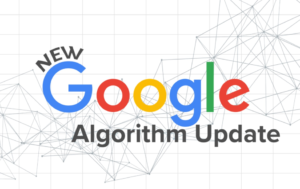Keywords are the foundation of SEO. They help search engines understand what your content is about and match it with user queries. However, not all keywords are the same—some carry more weight, while others support your content’s relevance.
In this blog, we’ll break down the three main types of keywords—Primary, Secondary, and Latent Semantic Indexing (LSI) Keywords—and explain how to use them effectively to improve rankings and organic traffic.
Primary Keywords (The Core Focus)
What Are Primary Keywords?
Primary keywords are the main terms your page targets—the most relevant and high-intent phrases users search for. These are usually short-tail (1-2 words) or mid-tail (3-4 words) keywords with higher search volume and competition.
🔹 Example:
- Short-tail: “SEO tools”
- Mid-tail: “best SEO tools for beginners”
Why Are They Important?
- They define the core topic of your page.
- Help search engines categorize your content.
- Influence rankings for high-value searches.
Best Practices for Primary Keywords:
✔ Use in strategic places: Title tag, H1, meta description, URL, and first 100 words.
✔ Avoid keyword stuffing (Google penalizes over-optimization).
✔ Choose keywords with a balance of search volume and relevance.
Secondary Keywords (Supporting Terms)
What Are Secondary Keywords?
Secondary keywords are related phrases that expand on the primary keyword. They help cover subtopics, improve content depth, and capture long-tail searches.
🔹 Example:
- Primary: “best running shoes”
- Secondary: “lightweight running shoes for men,” “durable running shoes for trail running”
Why Are They Important?
- Improve content relevance by covering related queries.
- Help rank for long-tail searches (lower competition, higher conversion potential).
- Prevent keyword cannibalization (multiple pages targeting the same primary keyword).
Best Practices for Secondary Keywords:
✔ Naturally include them in subheadings (H2, H3) and body text.
✔ Use semantically related terms (e.g., “best jogging shoes” alongside “running shoes”).
✔ Group them in FAQ sections or bullet points for better readability.
Latent Semantic Indexing (LSI) Keywords (Contextual Signals)
What Are LSI Keywords?
LSI keywords are thematically related terms that help search engines understand the context of your content. Unlike exact-match keywords, they are natural variations and synonyms.
🔹 Example:
- Primary: “weight loss tips”
- LSI Keywords: “healthy diet plans,” “burn fat fast,” “exercise for weight loss”
Why Are They Important?
- Google uses them to assess content depth and relevance.
- Helps avoid penalties for keyword stuffing (since they’re natural variations).
- Improves rankings for voice search and conversational queries.
Best Practices for LSI Keywords:
✔ Use tools like Google’s “People Also Ask” and “Related Searches” to find them.
✔ Integrate naturally—don’t force them.
✔ Focus on user intent (answer related questions within the content).
How to Research and Use These Keywords Effectively
Step 1: Find Primary Keywords
- Use Google Keyword Planner, Ahrefs, or SEMrush for high-intent keywords.
- Analyze competitor pages to see which keywords they rank for.
Step 2: Identify Secondary Keywords
- Use long-tail keyword tools (AnswerThePublic, Ubersuggest).
- Check Google Autocomplete and “People Also Search For.”
Step 3: Discover LSI Keywords
- Use LSI Graph or Google’s related searches.
- Review top-ranking pages to see which terms they include.
Step 4: Optimize Content with All Three Types
- Primary keyword: Title, H1, meta description.
- Secondary keywords: Subheaders, body text.
- LSI keywords: Naturally within paragraphs, FAQs.
Common Mistakes to Avoid
❌ Overusing primary keywords (leads to spammy content).
❌ Ignoring long-tail and LSI keywords (misses ranking opportunities).
❌ Creating duplicate content (targeting the same keyword across multiple pages).
Final Thoughts
A winning SEO strategy doesn’t just rely on one keyword type—it balances primary, secondary, and LSI keywords to create comprehensive, user-friendly content.
🔹 Need Help? If you’re struggling with keyword research, Get in touch with Ovintel today.





